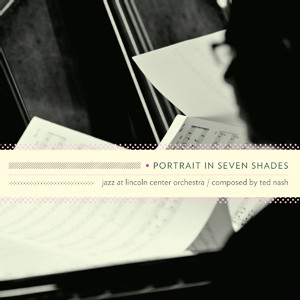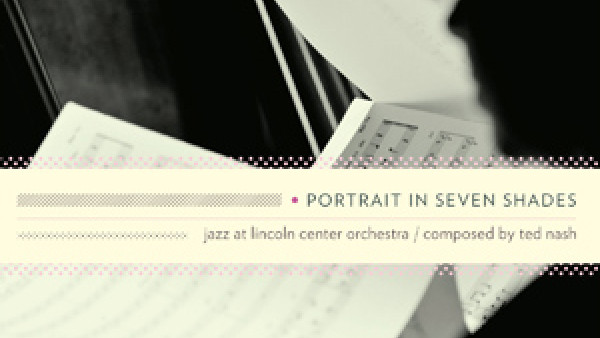Brush Strokes of Sound: Art That Keeps Changing
One morning last July, the saxophonist Ted Nash took a spin through the fourth- and fifth-floor galleries at the Museum of Modern Art. It was a visit studded with small realizations, in the placid hour before crowds arrive. Ann Temkin, MoMA’s curator of painting and sculpture, was there to answer questions, of which Mr. Nash had a few.
He also had his own ideas. At one point he compared the relationship between Picasso and Braque, pioneers of Cubism, to the one between the saxophonists Charlie Parker and Sonny Stitt, paragons of bebop. At Picasso’s “Demoiselles d’Avignon,” he paused.
“This is a famous image too,” he said, to which Ms. Temkin replied: “This is like our ‘Mona Lisa.’ ” Mr. Nash took a digital photograph. He had just seen Picasso’s house in Málaga by accident, he said, during a tour of Basque Spain with the Jazz at Lincoln Center Orchestra.
Now, seven months and many museum trips later, Mr. Nash is preparing for the premiere of his “Portrait in Seven Shades,” a suite inspired by pieces from MoMA’s collection. It will be the focal point of “Jazz and Art,” a Jazz at Lincoln Center concert Thursday through Saturday at the Rose Theater.
“There are so many parallels between the two art forms,” Mr. Nash said recently at the museum, standing in front of “Les Demoiselles” again.
“But the end result of the art is so different,” he added. “A painting exists forever, exactly how it is, and with jazz music, it changes all the time. I love the idea that in the concert, we’re going to have both things simultaneously: a fixed piece of art that doesn’t change combined with something that’s going to be changing.”
He could almost have been talking about his role in the Jazz at Lincoln Center Orchestra, which has changed subtly but considerably since its director, Wynton Marsalis, invited him aboard a decade ago.
Continue reading the main story
Mr. Nash, 47, came to the band with a wellspring of jazz experience. He grew up in Los Angeles, where his father, the trombonist Dick Nash, and his namesake uncle, a saxophonist, nurtured his prodigious talent. Starting at 16, he held down jobs with a succession of first-rate big bands, including, notably, after he moved to New York, the Mel Lewis Orchestra.
And Mr. Nash was a prominent member of the Jazz Composers Collective, a confab dedicated to fostering original music, and the Herbie Nichols Project, its best-known ensemble (oddly enough, a repertory band). Jazz at Lincoln Center presented an adjustment. “I felt a little bit out of place at the beginning,” Mr. Nash said.
It didn’t take long for Mr. Nash to lay claim to what Mr. Marsalis calls “the wildcard chair” in the band.
“He plays, on a virtuosic level, all of the reed instruments,” Mr. Marsalis said. “He plays them all perfectly in tune, and he has a personality on each one that’s different. And he can read music unbelievably well.”
For a time, though, Mr. Nash maintained a kind of dual citizenship: he was playing more historical material at Jazz at Lincoln Center and more new music with the collective. In 1999 he made a breakthrough album, “Rhyme & Reason” (Arabesque), for a jazz quartet and strings.
“That was really the first hint of what a great arranger he is, in addition to being a composer,” said the pianist and collective member Frank Kimbrough, who played on the album. (Mr. Marsalis sat in on two tracks.)
In some ways the “Jazz and Art” commission sheds light on a different era. Jazz at Lincoln Center has featured more new music every year, and not just from Mr. Marsalis. At the same time, its institutional influence has grown, so that it makes perfect sense for MoMA, whose board of trustees includes Mr. Marsalis, to provide such broad access to Mr. Nash.
Meanwhile, the Jazz Composers Collective dissolved in 2005, essentially a victim of its own success. All its members now have busy solo careers. Mr. Nash himself has issued four albums since “Rhyme & Reason,” while maintaining his full-time commitment to Jazz at Lincoln Center.
“Portrait in Seven Shades” stretched that into an overtime commitment, as Mr. Nash became absorbed with its concept and scope. The presentation will be visual as well as musical, thanks to slide projections and a lighting design coordinated by an outside director. During a recent MoMA walk-through, Mr. Nash pointed out aspects of specific paintings as he discussed the suite’s seven movements, each inspired by a different artist.
“Les Demoiselles d’Avignon,” as it turned out, inspired an exploration of the structural aspects of Cubism. Starting with the idea that each plane of a cube has four sides, Mr. Nash imbued his “Picasso” with four tonal centers, though its root is the standard flamenco key, E.
“Once we set up the Spanish feeling, it goes into this development of thematic material that is layered in fourths,” Mr. Nash said, describing a harmonic interval.
Other sections were less formally constructed. “Matisse” proceeded from Mr. Nash’s personal association of Matisse’s late-career style with the “playful quality” of Thelonious Monk’s music. “Dalí,” conceptually prodded by the melted clocks in Salvador Dalí’s “Persistence of Memory,” employs a warped-sounding, asymmetrical time signature. “Van Gogh” was as informed by that painter’s tormented life as by the “very tranquil” composition of “Starry Nights.” (The song, which is also Mr. Nash’s first foray into lyrics, features a vocal by Yola Nash, his wife.)
Chagall paintings like “I and the Village” nudged Mr. Nash toward a chamber piece for several guests: the violinist Mark O’Connor, the accordionist Bill Schimmel and the trombonist Wycliffe Gordon. The instrumentation closely echoes that of Odeon, a band that Mr. Nash has featured on two acclaimed albums. It is perhaps the clearest instance of his outside interests entering the Jazz at Lincoln Center nexus, though there have been fleeting points of intersection. (Mr. Gordon, for one, is an alumnus of both bands.)
Late last month, during the first rehearsal of Mr. Nash’s new music at Rose Hall, the Jazz at Lincoln Center Orchestra breezed through “Monet,” a springlike waltz that called pastels to mind. Then it struggled with “Picasso,” parts of which had been poorly transcribed. But even in rough shape, Mr. Nash’s Cubist exercise packed a punch.
“I love being able to push them,” he said of the band a few days later, at home on the Upper West Side. He was listening to a rehearsal tape of “Pollock,” which calls for an Abstract Expressionist scrabble, swinging but atonal, among the orchestra’s horn section.
Mr. Nash was done tinkering with his charts and looking forward to the concert. He was also beginning to think about a private commission he has received to compose a suite based on the seven chakras of the human body. Not that he is loosening his focus on Jazz at Lincoln Center.
“More and more,” he said, “I understand that I have an opportunity, and even a responsibility, to bring more of myself to this organization.”
by Nate Chinen
Source: New York Times


